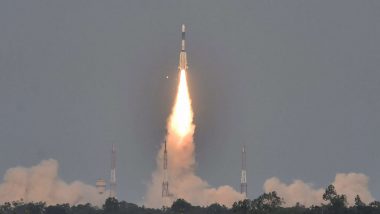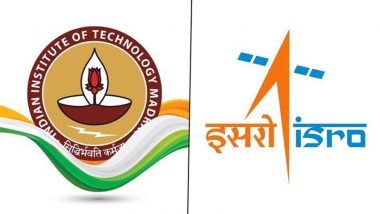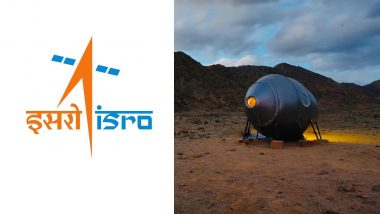Sriharikota, March 30: Hours after the Indian Space Research Organisation (ISRO) successfully launched its latest communication satellite GSAT-6A on Thursday, it released a video captured by cameras onboard the launch vehicle - GSLV-F08 geosynchronous rocket. The video which lasts for about 1.41 minutes video clip shows the eye-catching and marvellous visuals of the lift off from Satish Dhawan Space Centre in Sriharikota.
The video shows the pre-launch when the GSLV Mk-II is moved to the launch pad at Satish Dhawan Space Centre. Then starts the countdown sequence. The video involves visuals of the stage separation, payload firing, and ejection of the satellite complete the short video.
ISRO on Thursday achieved another milestone by successfully placing the GSAT-6A in the designated orbit. Scientists at the mission control centre, located some 2km away from the launch pad, broke into celebrations. The Geosynchronous Satellite Launch Vehicle (GSLV-F08), fitted with indigenously developed cryogenic third stage, injected the satellite into orbit about 18 minutes after its lift off from the Satish Dhawan Space Centre.
As per reports, the satellite would provide a thrust to mobile communication through multi-beam coverage facility, the Isro said. After its injection into GTO by GSLV-F08, ISRO’s master control facility at Hassan takes control of of GSAT-6A and performs the initial orbit raising manoeuvres by repeatedly firing the Liquid Apogree Motor (LAM) onboard the satellite, finally placing it in the geostationary orbit. After this, deployment of the antenna and stabilisation of the satellite will be performed. GSAT-6A will be positioned at 83 degrees east longitude in about a week, ISRO scientists said.
ISRO scientists said that one of the advanced features of the GSAT-6A satellite is its S-Band Unfurlable Antenna of 6-m diameter. This is one of the largest satellite antennas realised by ISRO. This antenna is utilised for five spot beams over the Indian mainland.
While speaking after the first successful launch under his leadership, ISRO chairman K Sivan said the GSAT-6A along with GSAT-6 will provide a platform for the development of advanced technologies for point-to-point satellite communication. He said the GSLV rocket had major improvements to enhance its payload carrying capability by 50% upto 3 tonnes.
During his address, Sivan informed that the induction of high-thrust Vikas engine in the second stage of the vehicle has boosted the thrust by six per cent. Besides, the rocket has been fitted with electromechanical actuation system in the place of electro-hydraulic actuation system and is guided by indigenously developed space grade lithium-ion (Li-Ion) cells. “The lithium-ion batteries are being looked up by the Government of India in its endeavour to popularise e-vehicles,” he said.
(The above story first appeared on LatestLY on Mar 30, 2018 11:07 PM IST. For more news and updates on politics, world, sports, entertainment and lifestyle, log on to our website latestly.com).













 Quickly
Quickly













 GT
GT







